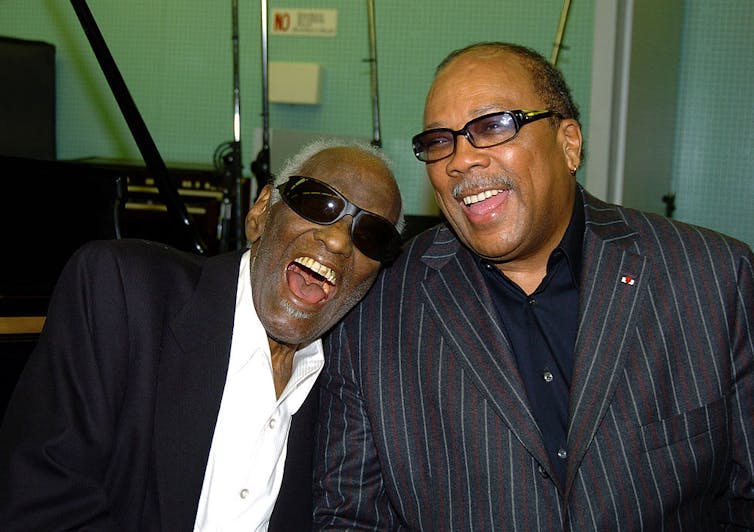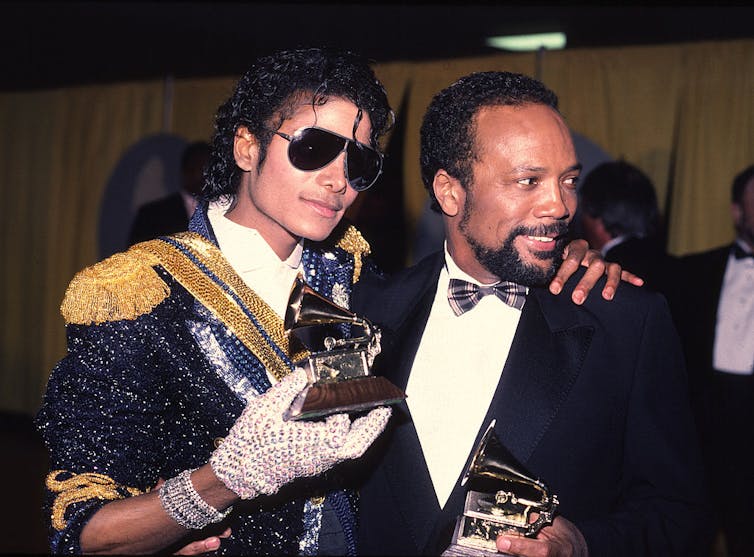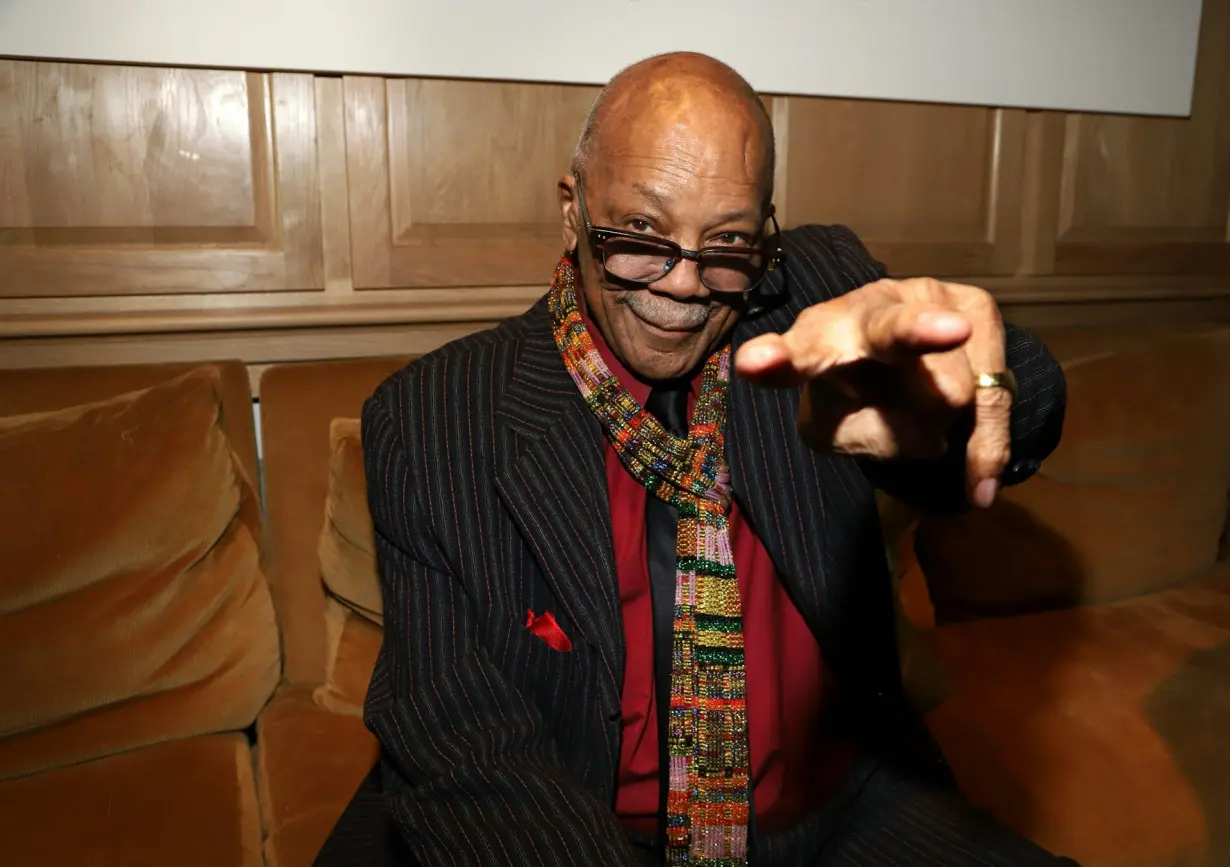On the sleeve notes of some of the most memorable and best-selling albums of all time, you’ll find the words “Produced and arranged by Quincy Jones.”
It was a hallmark of quality.
Jones, who died on Nov. 3, 2024, at the age of 91, transformed our understanding of musical arrangement. His work spanned decades and genres, from jazz and pop to hip-hop and film scoring. He worked with pop icons like Michael Jackson, Frank Sinatra, Ray Charles and Aretha Franklin, and also collaborated with lesser-known artists such as Lesley Gore and Tevin Campbell.
Each of his projects, collaborations and forays into new genres redefined what it meant to arrange music.
As a music business and entrepreneurship professor, I’ve studied and taught Jones’ techniques, which I hope can inspire the next generation of musicians.
A master musical architect
Musical arrangement might seem like an abstract concept.
Simply put, it’s the art of deciding how a song unfolds. While a composer writes the melody and harmony, an arranger shapes the experience, choosing which instruments play when, how textures build and where dynamics shift.
Arrangement transforms a song from notes on paper into a fully realized piece of art that resonates with listeners. In essence, an arranger acts as a musical architect, designing the structure of a song to tell a compelling story.
Jones brought a visionary approach to arranging. He wasn’t merely filling in the gaps around a melody with a drum beat here and a horn section there; he was crafting a musical narrative that gave each instrument a purpose, guiding listeners through an emotional journey.
From his early work in the 1950s and 1960s with jazz greats like Count Basie and R&B star Ray Charles, to his blockbuster productions with Michael Jackson, Jones saw arrangement as a tool to guide listeners from one musical moment to the next.
Elevating voices
His work on “Sinatra at the Sands” is but one example.
Jones created lush, energetic big-band arrangements that perfectly complemented Sinatra’s smooth, warm voice. The choice of brass swells and the dynamic shifts amplified Sinatra’s charisma, turning the album into a lively, almost-cinematic experience. Unlike many arrangements, which often stay in the background, Jones’ took center stage, blending harmoniously with Sinatra’s vocals while adding depth and excitement to the entire performance.
In Ray Charles’ “I Can’t Stop Loving You,” Jones used orchestral swells and background vocals to bring out the soul in Charles’ voice, creating a richly emotional experience for listeners. By intelligently pairing Charles’ gospel-tinged vocals with a polished, orchestral arrangement, Jones captured the tension between sorrow and resilience – a demonstration of his ability to communicate complex emotions through arrangement.

Turning songs into stories
Jones’ skill at using arrangement as a storytelling device was exemplified by his collaboration with Jackson.
Albums like “Thriller” and “Off the Wall” showcased Jones’ knack for inventively layering sounds. On “Thriller,” Jones combined electronic and acoustic elements to create a multidimensional soundscape that set a new standard for production.
His ability to incorporate textures, background vocals and unique instrument choices – such as horror actor Vincent Price’s iconic narration on the song “Thriller” – transformed pop music, setting the stage for future producers to experiment with storytelling in their own arrangements.
In Jackson’s “Bad,” Jones pushed the boundaries of genre by blending funk rhythms with pop structures, giving Jackson’s music a timeless appeal.
The title track’s arrangement has layers of rhythm and harmony that build a feeling of tension and power, enhancing Jackson’s message of confidence and defiance. Each instrument and background vocal in “Bad” serves a purpose, creating a sound that is bold, exciting and engaging.
Lessons for educators
For educators teaching music production and commercial music, Jones’ approach provides a gold mine of practical lessons.
First, his commitment to genre fusion teaches students the importance of versatility. Jones’ career demonstrates that blending jazz, pop, funk and even classical elements can create something innovative and accessible. Students can learn to break free from the constraints of single-genre production, seeing instead how various musical styles can work together to create fresh, engaging sounds.

Second, Jones’ emphasis on storytelling through arrangement offers students a framework for making music that resonates.
In my classes, I encourage students to ask themselves: How does each musical element support the emotional arc of the song? By studying Jones’ arrangements, students learn to think of themselves as storytellers, not just sound engineers. They can begin to see arrangement as an art form in itself – one that has the power to captivate audiences by drawing them into a musical journey.
Finally, Jones’ work shows the power of collaboration. His willingness to work across genres and with a variety of artists – each bringing unique perspectives – demonstrates the value of open-mindedness and adaptability.
His life’s work serves as a reminder that music is more than just sound; it’s an experience shaped by careful, intentional decisions, with every sound and silence in a piece of music serving a purpose.

Jose Valentino Ruiz is the CEO of JV Music Enterprises.
Source: The Conversation

 China's industrial profits decline at slower pace in Nov
China's industrial profits decline at slower pace in Nov
 China's BYD offers year-end discounts of up to 11.5%
China's BYD offers year-end discounts of up to 11.5%
 Oil prices set for weekly gain on China stimulus optimism
Oil prices set for weekly gain on China stimulus optimism
 Canada ministers to meet Trump aides in Florida over tariff risks
Canada ministers to meet Trump aides in Florida over tariff risks
 Sirianni and Ertz cleared the air after exchanging words following Washington's win over the Eagles
Sirianni and Ertz cleared the air after exchanging words following Washington's win over the Eagles
 Tucker Gleason runs and passes for 5 OT scores as Toledo beats Pitt 48-46 in bowl-record 6 overtimes
Tucker Gleason runs and passes for 5 OT scores as Toledo beats Pitt 48-46 in bowl-record 6 overtimes
 Why Nefertiti still inspires, 3,300 years after she reigned
Why Nefertiti still inspires, 3,300 years after she reigned
 Quincy Jones left his indelible touch on some of the 20th century's most iconic albums.
Quincy Jones left his indelible touch on some of the 20th century's most iconic albums.







